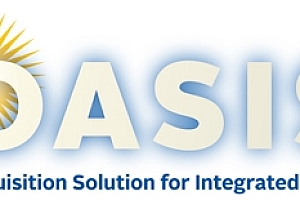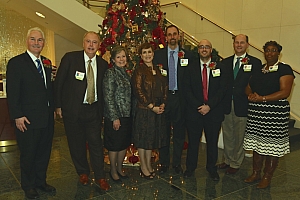The GSA-DHS OASIS MOU: A Game-Changer at DHS
In July, DHS and GSA signed a Memorandum of Understanding (MOU) enabling greater use of GSA’s OASIS contract vehicle across all of DHS. DHS expects to increase its contract awards under OASIS from $11 million in 2015 to $250 million in 2016. This agreement is a game-changer for the DHS contracting community.
Under terms of the MOU, GSA agreed to lower the contract access fee for DHS from 0.75% to 0.25%, and DHS in turn agreed to include OASIS as one of its “Strategic Sourcing” contract vehicles covered under its “Mandatory for Use” Management Directive. This means that current DHS contractors, particularly those under TABSS and EAGLE II, will need to work harder to shape opportunities onto their respective contract vehicles, and OASIS contractors (at least many of them), will have to figure out how to navigate the world of DHS acquisitions.
This sets up a new contracting environment at DHS that could have broad ramifications for industry. GSA’s OASIS is being promoted at DHS as the replacement for TABSS, and the Program Management contract vehicle of choice. This is a body blow to TABSS contract holders and an immediate opportunity for OASIS contractors. With TABSS sun-setting in two years, DHS contracting officers will immediately see OASIS as a preferred contract vehicle, fully endorsed by acquisition leadership. With its wide variety of available NAICS Codes, 21 in Pool 1 alone, this is a huge boon for OASIS contract holders.
Many OASIS contract holders focus on DoD and have less experience at DHS. This may be a partnering opportunity for experienced DHS firms with complementary skills. Small businesses in disadvantaged socio-economic categories with DHS experience are in especially good position to take advantage of partnering.
EAGLE II contract holders should also take notice of the OASIS MOU, even with more than five years remaining in EAGLE II’s full period of performance. IT-focused Program Management requirements are still supposed to be released under EAGLE II. Because of the decentralized acquisition model used by DHS, exactly what constitutes “IT Services” under EAGLE II may be interpreted in a variety of ways by different Components. EAGLE II contract holders must continue to educate Component contracting officers and demonstrate how upcoming requirements fit on the NAICS codes in EAGLE II while being aware of the new latitude offered for Program Management services under OASIS.
The net result: Understanding the unique terms of these contract vehicles, as well as the tendencies of contracting officers in each DHS Component will be more important than ever in 2016.
About Dennis Murphy, President, ASM Concepts
Dennis Murphy is a former senior executive with DHS and U.S. Customs Service and was a principal with Booz Allen Hamilton. He also served as Assistant Commissioner for Public Affairs and as the first Communications Director for DHS Border and Transportation Security. He is now president of ASM Concepts, a management consulting company offering clients unique ways to merge marketing with business development to differentiate them from their competitors to both grow and scale their business.
Read the full ASM Concepts analysis of the OASIS MOU on the ASM Concepts website . For questions or further information, contact Dennis Murphy at [email protected].

















 (Ret.) Wight is a Hobbs, New Mexico, native. Prior to retiring from the USAF after 27 years of service, Col (Ret.) Wight served as the Chief of Air Force Strategy at the Pentagon, where he focused on future threats, alternative force structures, and developed long term strategic policy. He was also Commander, 52d Fighter Wing, Spangdahlem Air Base, Germany, where he led over 16,000 military, civilian and dependent personnel who maintained, deployed and employed F-16 and A-10 aircraft, TPS 75 radar systems and $2.5B of U.S. Protection level 1 assets. Prior to joining the AF, Col (R.) Wight served as a Police Officer for the University of Oklahoma and the City of Moore, OK from 1980-1985. Colonel Wight has two children, Taylor (28) and Shanna (22).
(Ret.) Wight is a Hobbs, New Mexico, native. Prior to retiring from the USAF after 27 years of service, Col (Ret.) Wight served as the Chief of Air Force Strategy at the Pentagon, where he focused on future threats, alternative force structures, and developed long term strategic policy. He was also Commander, 52d Fighter Wing, Spangdahlem Air Base, Germany, where he led over 16,000 military, civilian and dependent personnel who maintained, deployed and employed F-16 and A-10 aircraft, TPS 75 radar systems and $2.5B of U.S. Protection level 1 assets. Prior to joining the AF, Col (R.) Wight served as a Police Officer for the University of Oklahoma and the City of Moore, OK from 1980-1985. Colonel Wight has two children, Taylor (28) and Shanna (22).